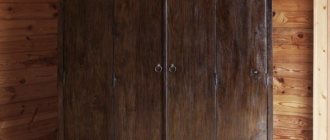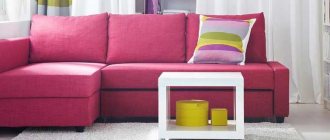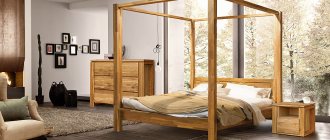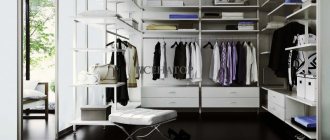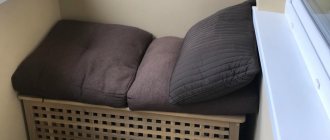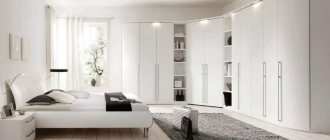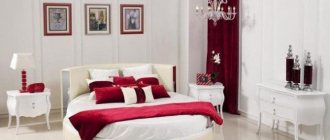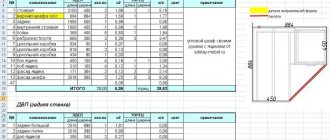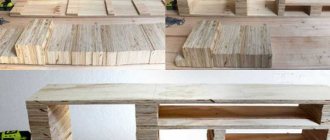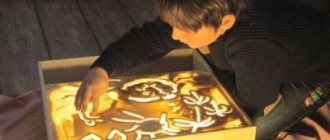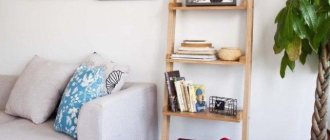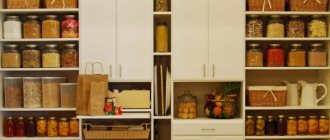Varieties
Shelves perform a variety of functions, which is why there are so many varieties of them.
In particular, there are wall-mounted, suspended and corner structures. Wall-mounted ones are attached to the wall above a sofa, bed or table. Perhaps this is the most common type of shelves. Hanging shelves are attached to the ceiling using cables, belts or chains. Often such models are used for interior decoration in the living room, bedroom or kitchen. Corner models find their “shelter” at the junction of two walls. They are attached either to the walls or to the ceiling. Corner models are also actively used in the interiors of different rooms.
Shelves in a niche are a good alternative to a bulky closet.
Taking into account the shape of the shelves, their appearance, the structures are divided as follows:
- By shape, color and size;
- According to surface texture: matte, glossy, textured;
- By belonging to a certain style;
- By functionality (additional use of stands, lights, etc.).
Well, depending on the configuration, shelf models differ in the following indicators:
- The presence or absence of side walls in the structure;
- Horizontal or vertical position relative to the wall;
- Multi-tiered models or sliding to the side;
- The presence of right angles or, conversely, rounded outlines.
This is an excellent decorative solution that can be used in any room.
Shelves can be made of different materials. The most popular are:
- Natural solid wood;
- Metal;
- Glass (colored, frosted, transparent);
- MDF;
- chipboard;
- Plastic;
- Combined models (made from two or more different materials).
A niche in the wall plays the role of a beautiful and convenient addition to the interior of the apartment.
Types and shapes of mirrors
Wall mirrors
The design of a mirror in the hallway largely depends on the method of attaching this decorative element to the room. The most popular method is hanging on the wall. As for shapes, the most relevant are rectangular and round. There are no limits at all when it comes to the size of reflective surfaces, be it tiny or the entire wall. Frames are not required for wall hangings. Original mirrors with a sand pattern on the surface. Horizontal placement visually expands the walls, but lowers the ceiling.
Floor mirrors
A frame for a floor mirror is required, because it must be stable. Moreover, the special design of the stand allows you to select an individual angle of inclination of the reflective sheet. Thus, a person gets the opportunity to view himself from any convenient angle. Even dressing table sections do not provide such an advantage. As for shapes, floor models are usually made rectangular or oval.
Read: Cabinet in the hallway - an overview of all types, examples of interior design (105 photos)
Illuminated mirrors
Designers recommend eliminating the lack of lighting in the hallway with the help of illuminated mirrors. For this purpose, spotlights are used, mounted directly into the frame of the product. Such light sources do not dazzle the eyes, and also do not require additional sockets.
Feng Shui dictates its own rules
It's no secret that Eastern teachings on interior design pay special attention to mirrors, and require that they be placed correctly in the room. After all, the reflection of something can multiply in a person’s life.
Eastern sages insist on choosing a round mirror for the hallway, since it is this shape that helps preserve the energy that leaves the house when the door is opened. The circle is a symbol of harmony, helps restore damaged nerves, and gives peace.
- Armored doors will fit perfectly into any design
How to choose armored doors
Interior of the hallway in the apartment (100+ photos)
A cabinet with a mirror in the hallway can crush the reflection, causing serious damage to a person’s energy. Therefore, it is better to abandon bulky furniture and limit yourself to small shelves.
According to Feng Shui, a mirror in the hallway cannot be hung or placed directly in front of the front door. Thus, the sages recommend not to lock yourself in a cage, not to limit the freedom of spirit. Also, the reflection of the door can directly drive happiness and prosperity out of the house. In addition, reflective surfaces should not be placed opposite each other to avoid energy absorption by this mirror corridor.
Features of location in different rooms
Undoubtedly, every owner is free to follow exclusively his own preferences when decorating the interior of any room. But there are some simple rules for placing shelves, thanks to which you can hide the weaknesses and highlight the advantages of the room and interior.
From a large niche you can make a closet for things or place shelves for books there.
Living room
The choice of shelves for the living room interior is no less important than the choice of furniture, lighting system and decorative elements. In modern interiors, minimalism increasingly prevails: bulky walls are a thing of the past, they have been replaced by light, almost airy, modular structures. Such shelves combine the seemingly incongruous: without weighing down the space, they are able to provide enough space to accommodate all the necessary things. And the room, at the same time, remains practically free of furniture.
A small shallow niche can be well decorated with decorative elements or narrow shelves for various souvenirs and other beautiful trinkets.
Before purchasing shelves for the living room, decide on their function:
- Often in the living room, shelves are hung above the seating area (above the sofa) or above the TV. In the first case, this will be an excellent opportunity to place a library, and in the second, to place photo frames, souvenirs or small vases on the shelf.
- If your living room has a niche, consider it a bonus. Proper equipment of this space with the help of lighting will make the room unusual and interesting. In addition, a niche is a great way to save space.
- If you consider yourself a lover of all kinds of flora, place shelves near the window and place flowers on them.
- When placing shelves on the wall, stick to a checkerboard pattern. In this case, the interior will turn out to be very original. The main thing is that the models you choose are not bulky. And it is better to give preference to light designs.
If in your case the living room is combined with a bedroom, then the shelf can serve as a partition. Moreover, she can handle the role of both a “blind” wall and a through wall.
Kitchen
Shelves in the kitchen are needed both to solve very specific practical problems and as decoration. Most often, shelves for kitchen utensils, necessary appliances and dishes for everyday use are equipped with doors, which allows you to protect these items from dust and dirt. But the following is on display for everyone to see:
- Cookbooks;
- Sets of spices in beautiful jars (both convenient and beautiful to see);
- Vases with fruit (or sweets);
- Decorative tableware (dishes, plates, jugs, samovars);
- Small frames with paintings or photos.
In the niche you can place shelves for dishes, place jars with spices or flowerpots with flowers.
All this decorative splendor should not be placed on the wall where the work area is located, especially if the kitchen is small. Place eye-catching decorative items on the opposite side. By the way, in this way you will also ensure their safety.
It is also better to place corner and suspended structures on the side opposite the working area.
Shelves with lighting and souvenirs look very appropriate in the kitchen.
Bedroom
This truly sacred place needs an interior thought out to the smallest detail. Especially if the owner (or hostess) of the premises is a person with claims to maximum comfort and style.
Flowers, scented candles, books, or just beautiful dim lighting will wonderfully complement the bedroom interior.
Most often, wall shelves are chosen to decorate a bedroom. In the sleeping space, pots of flowers, souvenirs, photo frames, figurines, candlesticks or books are placed on such shelves. As a rule, in the rest room, shelves do not carry a multifunctional load; they serve exclusively for placing little things dear to the heart. Wardrobes and space in the sofa (bed) are used to place clothes or other things.
If you make shelves, you can create a cozy corner with family photos and books.
To keep the necessary items at arm's length, shelves are often placed above the head of the bed. In order for the design to look like a single whole, the color scheme and shape are chosen in accordance with the design of the bed itself and the bedside tables.
Children's room
You can't do without shelves in a nursery. Moreover, the design and location directly depend on the age of the child.
While the baby is just getting acquainted with the world around him, it is important to choose models with rounded edges to eliminate the possibility of injury. Toys, construction sets and educational games will be stored on the shelves. The shelves themselves for the little ones are made in the shape of clouds or flowers.
The most popular furniture for a children's room is shelves and racks.
As the child grows up, shelves of a more laconic configuration are chosen, because textbooks and other school supplies will “live” on them. At this age, it will be more convenient for the child if the shelves are hung above the desk. The ideal solution would be wall or corner models.
Well, in order to create a feeling of a single design concept, choose shelves that match the style of other interior items: wall and ceiling decoration, a sofa (or bed), as well as chairs or bedside tables, if any.
The upper shelves in the niche can be used for some things that the baby does not need on a daily basis.
Cabinet
This is one of the most specific rooms in any apartment. Its design depends on the direction of professional activity and the preferences of the owner of the office. In addition, the interior will have to be modified if the office is combined with a bedroom or living room.
Shelves have long ceased to be just storage space. They have become stylish, interesting, designer.
Documents, writing utensils, and other small items are put away in the table. Shelves in an office most often serve a purely decorative function, so photo frames, souvenirs, spectacular candlesticks and books in unusual bindings are placed on floor or wall-mounted structures.
Bathroom
For reliable and convenient fastening of shelves in the bathroom, special hooks and brackets are used. And the shelves are chosen either in a straight or angular configuration.
It is very important to choose the right material from which bathroom models are made, because they will be used in conditions of high humidity. Most often, preference is given to glass, MDF with a water-repellent coating, and stainless metal.
Tubes with bath products, scented candles, bath salts, decorative shells - these things, placed on niche shelves, will decorate the room in the best way.
In addition to shelves, the bathroom must have systems for drying towels, as well as places for storing cleaning supplies.
Wardrobe
If you are lucky enough to have an entire room as a dressing room, carefully consider the storage system. In this space, functionality comes first, with beauty, style and uniqueness coming second.
Shelves, holders and other dressing room contents can have different designs.
Shelves should be comfortable, practical and exactly the right size for your things and shoes. The design does not matter: floor, wall, corner or straight - the main thing is that they provide you with comfort of use and safety of things.
Drywall in the interior design of the hall
The hall in the apartment is a place that can be used for receiving guests, for family dinners, for relaxation and even for sleeping. This is especially true for small families and apartments in which several generations of the family live together. Therefore, the arrangement of niches, partitions and shelves in this room is especially important. The living room should accommodate a large number of people, which means it cannot be overloaded.
- By installing bookshelves on the wall in the hall facing the street, you can simultaneously hide the heating radiators and insulate the wall.
- If the room is used at night as a sleeping area, then you can make a niche around the sofa and, placing lighting in it, use it as night lighting, and the shelves next to the sofa will play the role of bedside tables.
- A TV and a built-in electric fireplace, as well as an aquarium, will fit perfectly into the niche located opposite the sofa.
- If the design of the room is arranged according to Feng Shui, then you cannot do without drywall. Its use allows you to make all sharp corners in the room rounded.
- Niches made of plasterboard with rounded shapes look impressive on the wall. The lighting located under the shelves allows you to create the feeling of the structure floating in the air, giving it weightlessness.
USEFUL INFORMATION: Design possibilities for plasterboard ceilings
How to create a niche
In many layouts you can find a niche. Someone considers this a flaw in the room and begins to rack their brains: how to decorate it. According to professional designers, a niche is a bonus for apartment owners. After all, with its help you can not only create a unique interior of its kind, but also add functionality to the room, especially if the apartment is small. So what to do with a niche? One option: place a sofa or bed in a niche.
An intimate niche made of plasterboard and a bed in it is an ideal solution for a small room.
The room does not always have openings in the wall, so if you wish, you can make partitions from plasterboard. The main thing is to use every centimeter of space; you can equip shelves around the sofa and place books or souvenirs on them.
Even if the niche is very small and you won’t be able to equip a full-fledged sleeping place, still, build a small sofa. For this you will need a mattress and a couple of pillows.
Since the space in the niche will be darker than in the main room, take care of additional lighting.
If it so happens that there is a window in the niche, even the smallest one, believe me, you are very lucky. Although additional lighting will still have to be done, you are guaranteed an unusual, cozy atmosphere.
Shelves in a niche
To be fair, it is worth noting that owners of square meters with niches prefer to equip them with a storage system. This decision is considered more correct and closer to the realities of life. How to make shelves in a niche with your own hands?
Shelves can be made of wood, plywood, veneered chipboard, covered with stain or painted.
In fact, the simple classic design is extremely easy to make. Especially since you don't have to create the sides. Buy a board from a hardware store, then cut it into pieces of the size you need. Sand the resulting wooden shelves well. This can be done either with sandpaper or with a sander. After this, coat the boards with a primer and then paint or varnish.
To install shelves in place, holders or small brackets are most often attached to the end parts of the niche.
Niches are an ideal location for built-in shelves and shelving as the walls of the niche provide the support required, especially for heavy loads.
If you want to make the shelves closed, and the desired model requires the presence of doors, then it is better to turn to specialists, since without certain skills it is difficult to cope with such a design.
Choosing a style
It would seem that a shelf is the simplest detail of the interior, however, in order for the overall appearance to be decent, it is important that the shelves are consistent with a specific stylistic solution.
- Classic. This style is characterized by the use of natural materials. Therefore, it is better if the shelves are made of natural wood. The structures can be attached to the wall, or located in a niche (if there is one).
The color scheme should either echo the general palette, or, conversely, become a bright accent in the interior.
When choosing a shape, give preference to conventional rectangular designs. Carvings can be used as decoration. - Modern. For modern design solutions in this style, closed glazed wall models are best suited. Matte or transparent shelves with multi-colored inserts or lighting complement the interior well.
Thanks to such decorative tricks, the interior turns out to be unique and very cozy. - Provence. French country style is perfectly complemented by wooden structures. Just paint the shelf in light colors and age it slightly.
Shelves are important for any room. With their help, the functionality of the space not only increases, it becomes more comfortable and stylish. And proper design of the existing niche will make the room unique in its own way, regardless of what you place in it: shelves or a sofa.
Niche-office, also in the bedroom
Workplace
For owners of small apartments, a niche is sometimes the only opportunity for privacy. Even if such a recess is in the bedroom, you can always arrange something like a miniature study in it: put a small table, hang shelves above it, etc.
Side niche for books
From a practical point of view, the side niche next to the workplace must also be used. It can save the user from the need to hang bookshelves on the walls. In general, you can easily place everything you need for productive work at home.
Workplace equipped with sockets
When equipping a workplace in a niche located in the bedroom, you should definitely consider the location of the sockets. Not to mention the fact that these elements must be present in such a niche (it may be necessary to run wires from the back of the niche or mount a plasterboard box).
Dual workstation
Most often, they try to squeeze a mini-office into an existing niche, as they say, “in its entirety.” But there is another, very interesting solution - to extend the desktop beyond the niche, leaving in it only a surface for a monitor and PC keyboard. True, such a furniture design cannot be bought ready-made in a store; you will have to order it individually from a furniture workshop.
50 design options for shelves in a niche in the interior
Corner niche by the window
This planning element stands apart from all other types and types of niches. If the layout creates a large niche in the corner of two windows, you can create one of the most comfortable and visually attractive nooks in the apartment.
A similar niche can also be obtained if, as a result of redevelopment, a balcony or loggia is combined with a room or kitchen. In such a place, you can easily decorate anything - from a large closet to a tiny but cozy ladies' boudoir, hookah or coffee room.
Design ideas
Designers working in the field of interior design offer many original ideas related to wall shelves.
They can become a bright accent in the living room. You can use a ready-made idea or use your own version. For example:
A shelf in the shape of a tree branch is fixed against the background of a monochrome wall. Shelves of various shapes can be made with your own hands. Resembling photo frames, they not only have practical benefits, but also decorate the wall. In the photo there is an original shelf made of blocks of wood, it creates the impression of “bending” under the weight of books. A yellow round shelf, divided into cells, similar to the sun or cheese, will always create a mood and warm you up, even in cloudy weather. Round original shelves are made of plastic pipes of different diameters. Metal pipes will be used and will look appropriate in a loft-style interior. The suspended form of the product includes wooden shelves that are strung on ropes. Woven macrame will look more interesting.
The structure can be attached to the ceiling or wall using a bracket. A glass shelf is suitable for souvenirs brought from travels to different countries. The glass shelf will not be conspicuous; the objects placed on it will appear to the admiring gaze. A combined shelf made of wood and metal, made by yourself, attracts the eye with its originality. A wall structure for flowers in the form of a staircase will decorate any room.
How to make shelves on the wall with your own hands: step-by-step instructions
Let's consider making a classic wall shelf made of wood.
Step 1
We determine the place. Where will the shelf be located? What material is needed to make it?
Its shape, design and dimensions. If you use available materials to make it, use their size and quantity to determine the size. When buying materials, the situation is different; you buy as much as you need.
To save yourself from disappointment and save money, you can make your own shelves.
Step 2
When choosing wooden boards, make sure that they are the same color. When processing wood, dark fibers appear more. This stage must be approached responsibly, otherwise you will end up with a shelf whose constituent parts will have different appearances.
Reliable assembly - robust design.
Step 3
Marking and preparing shelf parts for assembly. The boards are laid on a flat surface for work, after which the markings are transferred to them according to the drawing.
To make a shelf, you can use boards, bars, impact-resistant types of glass, remnants of pipes, and plastic parts.
Step 4
Check that the markings are applied correctly. Once you have ensured that the cut locations are indicated accurately, you can begin cutting.
All parts of the shelf are attached to each other and traditionally use screws or nails for this.
Step 5
Time to start processing parts of the future shelf using sandpaper or a sanding machine. The surface of the wood must be smooth and free of roughness so that the paint and varnish coatings are as smooth as possible.
If you do not have the above materials, you should go to a hardware store to buy them.
Step 6
After the parts of the shelf have dried, you can begin assembly. Assembly begins with the bottom board, which is laid on a flat work surface. Markings are made on it for the holes.
We retreat approximately 8-10 mm from the cut line of the board in two places and draw an even line parallel to the edge. Along the marked line we mark points at a distance of 5 centimeters from the edges of the board. Drill holes for self-tapping screws at these points.
When the marks on the bottom shelf are ready, make the same markings on the top of the shelf. The holes are ready, all that remains is to screw in the screws. We take the bottom part of the shelf and install it perpendicular to the work surface.
Then we attach the sidewalls and screw them on. We install the resulting structure with its lower part on the table and screw the upper part to the sides. We screw the fasteners to the sides on the back side adjacent to the wall.
You can't assemble a shelf with your bare hands.
